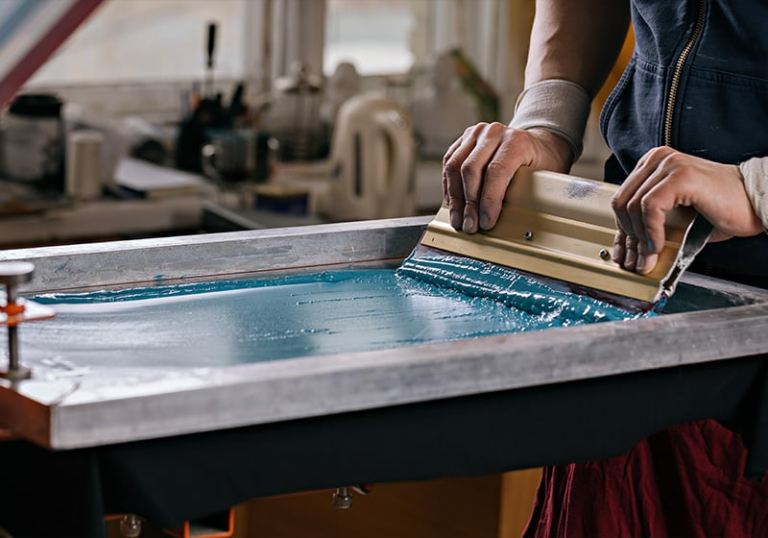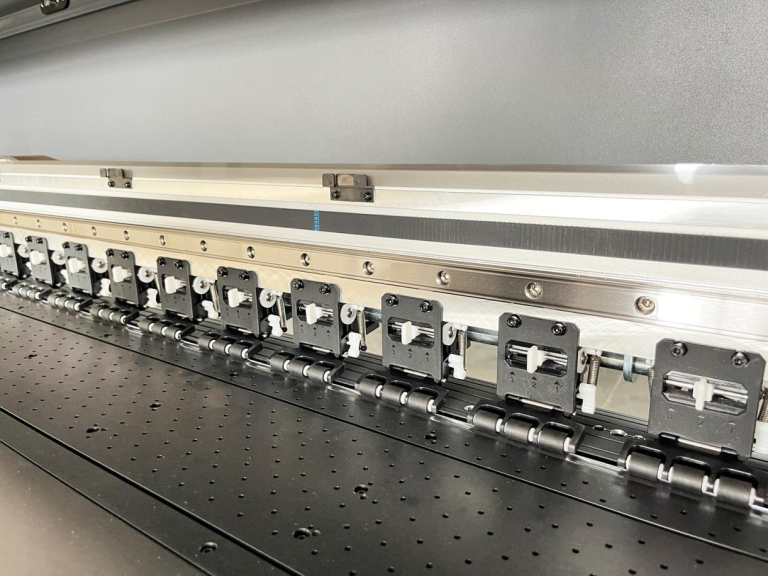Choosing the right printing technology is a crucial decision for those entering the customization business. Understanding the distinctions is vital for making an informed choice based on your business’s size and scale. Direct to Film printing (DTF) and screen printing are prominent options for customizing T-shirts, each delivering high-quality results. In this article, we compare screen printing machines to Direct to Film printers, providing insights into both processes and their respective advantages.

Direct to Film (DTF) Printing: Direct to Film (DTF) printing is a contemporary and innovative process widely used in customization and apparel decoration. Known for producing high-quality, full-color prints on various fabrics, including dark garments, DTF involves several key steps:
- A design is printed onto a special PET film using a DTF printer, utilizing CMYK pigments and white ink.
- After the initial ink layer, a white ink layer enhances color vibrancy and provides a base for subsequent layers.
- A powder adhesive coats the wet ink, excess powder is removed, and the film is heated for fabric transfer.
- The printed film is applied to the garment using a heat press, and the adhesive binds colored pigments permanently.
Advantages of DTF printing include intricate designs, vibrant colors, compatibility with various fabric types, and faster production for smaller runs.

Screen Printing: Screen printing is a popular technique in the customization industry, involving applying ink through a stencil or “screen” onto a substrate. The process includes:
- Design creation, color layer separation, and screen coating with light-sensitive emulsion.
- Screens are exposed to light, hardening the emulsion except where the design transferred.
- The substrate is secured, screens aligned for accurate color registration, and ink applied through the screen onto the substrate.
- The printed substrate passes through a dryer to cure the ink permanently.
Advantages of screen printing include versatility across materials, durability, and cost-effectiveness for large quantities.
Screen printing limitations include challenges with intricate designs, labor-intensive setup for small runs, and suitability for detailed or photographic designs.

Choosing Between Screen Printing and DTF: Adapting to a changing market requires understanding the strengths and weaknesses of each option. DTF Printers offer flexibility and higher production speeds, making them cost-effective for vibrant, full-color designs on dark fabrics. In contrast, screen printing excels in larger quantities, especially with simpler designs. For projects featuring intricate, multi-color designs in various quantities, DTF proves superior.
